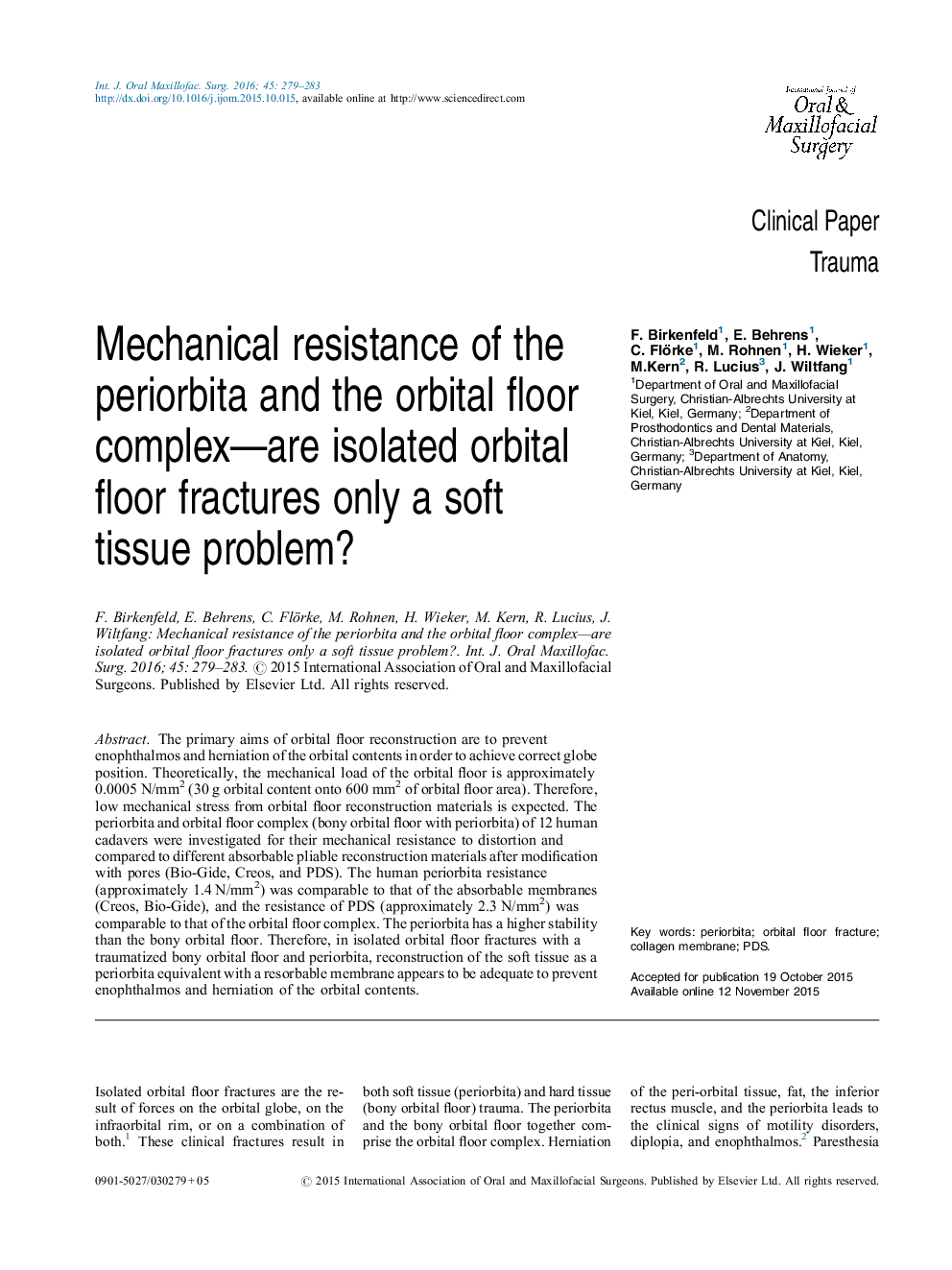| Article ID | Journal | Published Year | Pages | File Type |
|---|---|---|---|---|
| 3131854 | International Journal of Oral and Maxillofacial Surgery | 2016 | 5 Pages |
The primary aims of orbital floor reconstruction are to prevent enophthalmos and herniation of the orbital contents in order to achieve correct globe position. Theoretically, the mechanical load of the orbital floor is approximately 0.0005 N/mm2 (30 g orbital content onto 600 mm2 of orbital floor area). Therefore, low mechanical stress from orbital floor reconstruction materials is expected. The periorbita and orbital floor complex (bony orbital floor with periorbita) of 12 human cadavers were investigated for their mechanical resistance to distortion and compared to different absorbable pliable reconstruction materials after modification with pores (Bio-Gide, Creos, and PDS). The human periorbita resistance (approximately 1.4 N/mm2) was comparable to that of the absorbable membranes (Creos, Bio-Gide), and the resistance of PDS (approximately 2.3 N/mm2) was comparable to that of the orbital floor complex. The periorbita has a higher stability than the bony orbital floor. Therefore, in isolated orbital floor fractures with a traumatized bony orbital floor and periorbita, reconstruction of the soft tissue as a periorbita equivalent with a resorbable membrane appears to be adequate to prevent enophthalmos and herniation of the orbital contents.
